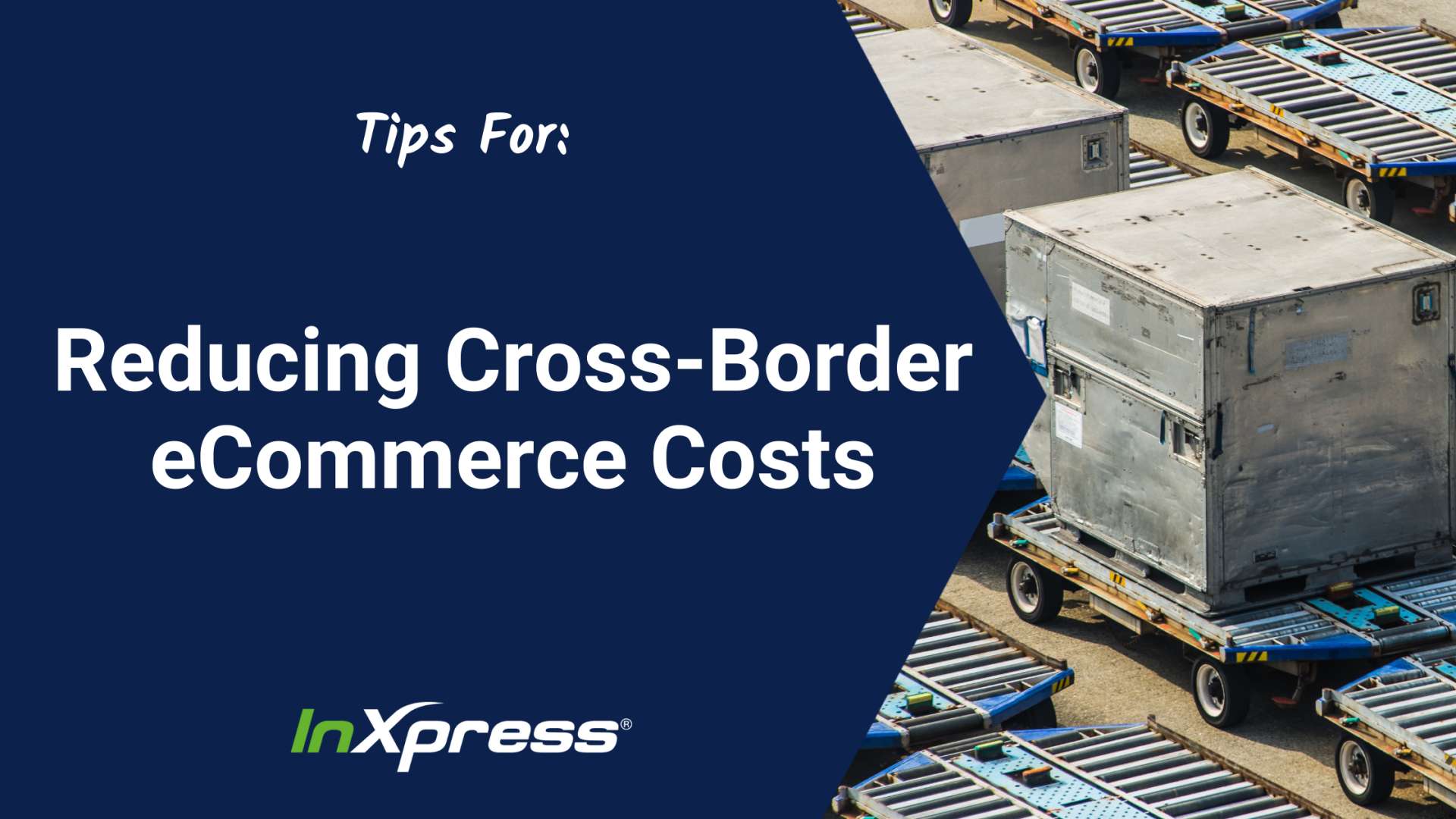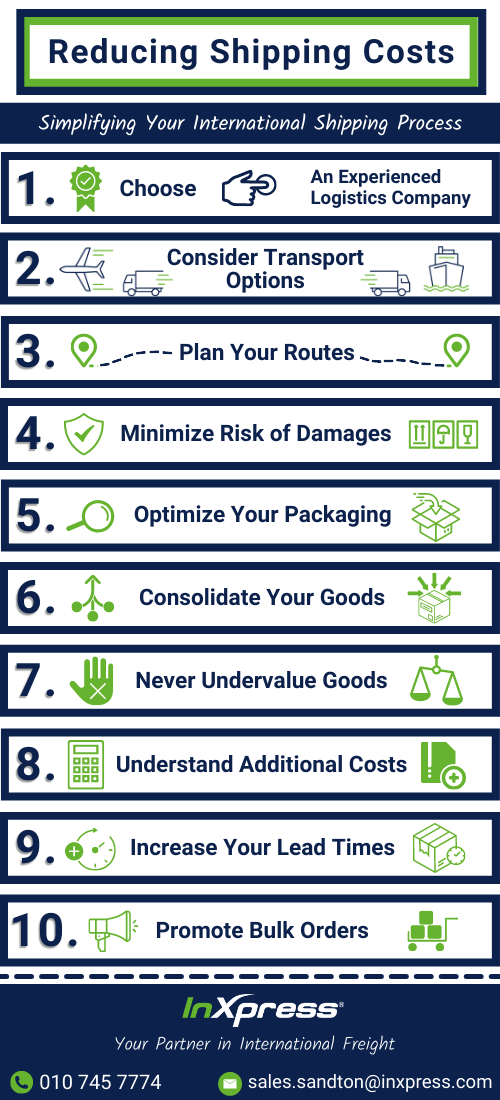#10 Tips For Reducing Costs & Simplifying Your Cross-Border Shipping Process

Looking to cut down on your business’ shipping costs while keeping your customers satisfied?
Whether you run a small eCommerce store or a large scale business, it’s essential that you get the best price suited for your international shipping in order to reduce your overhead expenses and bring in more revenue.
To meet your customers’ ever-increasing demands, you need to find a balance - offering exceptional service while reducing your shipping costs. Fortunately, when it comes to cross-border shipping, there are several ways to effectively save on costs.
Here are some of the ways to save big on your business’ shipping costs...

1. Work With an Experienced Logistics Company:
‘Logistics is the process of analyzing goods to determine the most efficient route and mode of transport.’
That being said, working with an experienced and
full-service logistics company can save you time and money. Consult with your logistics provider about ways you can manage and reduce your shipping costs, maximize efficiency, and take advantage of any discounts or rebates they may offer.
It is always best to work with one logistics company instead of bouncing between different ones. And never be afraid to negotiate in order to find the best price that’s suited to your shipping needs.
2. Mode of Transportation:
There are three main modes of transportation for cross-border freight shipping. With each having their own advantages and significantly different costs...
- Ocean Freight - This is the most affordable method of transport (especially when moving a large number of goods internationally). Though affordable, ocean freight can be quite slow.
- Air Freight - This transport method is speedy but expensive and comes with limitations (in terms of cargo weight and dimensions)
- Truck Freight - Where possible, this method is very cost-effective but slow over long distances. Truck freight does also come with space limitations.
Combining all three of the above methods is often the best way to cater to all customers and order types.
No matter which transportation method you choose, it’s important to choose a
reliable shipping company that is able to offer a solution customizable to your shipping needs and work with you to plan the best routes for your shipments.
3. Route Planning:
Talk with your provider about the route your goods will take and weigh the impact of more direct routes on your costs and timing. Route planning is an efficient way of reducing both delivery times and shipping costs.
4. Minimize Risk of Damages:
Managing risks and minimizing damages are simple ways of reducing your shipping costs.
In order to protect your shipments from damages or thefts (and the costs that come with them), follow the below simple steps:
- Make sure that you're covered with comprehensive insurance.
- Keep all your items together on the shipment if possible.
- Ensure your goods are well cushioned and tightly wrapped.
- Make sure that your labels are clear and accurate and that your label adhesives can withstand temperature changes.
- Ensure that all paperwork is filled out honestly and correctly (by team members and vendors) in order to reduce the risk of mistakes and costly penalty fees.
5. Optimize Your Packaging:
Shipping and freight charges are based on the weight (how heavy they are) and volume (how much space they take up) of your packages. Optimizing your packaging and reducing any extra or unused space - not only minimizes the risk of damage, but helps to reduce the cargo space and what you pay for it. For further tips on how to package your goods correctly, click
here.
6. Consolidate Your Goods:
Combine smaller or multiple orders to create more volume and take advantage of large volume pricing. It’s important to remember though, that it may take longer for these goods to reach their destinations as they will entail more stops along the way.
7. Don’t Undervalue Your Products:
You may think that you can save on customs by underreporting the value of your shipment. Not only will this result in fines and penalties, but you may even lose the right to ship internationally if this becomes a repeat occurrence.
8. Understand Your Additional Shipping Costs:
Transportation methods and carriers all have different charges beyond their regular freight rates. It’s important to find these out and understand them so that you’re able to find the best rates for your shipments.
Duties and taxes, fuel and handling charges are all common expenses added to your standard rates.
Discuss the true costs of various shipping methods with your
provider - this way you can eliminate any unnecessary expenses.
9. Increase Your Lead Time:
Rushed shipping will always be more expensive. Communicating realistic and adequate lead times can save you money. It can also allow you a time to absorb any border or weather delays while keeping your customers satisfied. This way, your happy customers will be sure to return to your store for future transactions.
10. Promote Bulk Orders:
Don’t make the same mistake of so many businesses who forget to encourage their customers to buy bulk orders. Shipping larger orders less frequently is far more cost-effective and will reduce your shipping costs tremendously (opposed to more frequent, smaller orders).
And so, instead of having your customers order their usual supply of goods regularly, rather entice them to buy larger quantities (less frequently) with cost saving incentives.
Do this by creating incentives or marketing your products to be purchased as bulk orders. For example, you can offer a free shipping threshold (when customers order goods over a certain value, they won’t have to pay for their shipping).
To discuss these cost savings further or to find out how you can further reduce your shipping costs, feel free to
contact us at InXpress Sandton. We’re here to assist you in creating a smooth and efficient shipping process, from start to finish.











